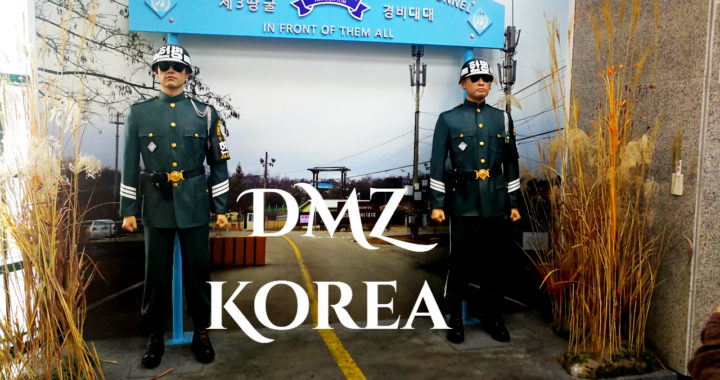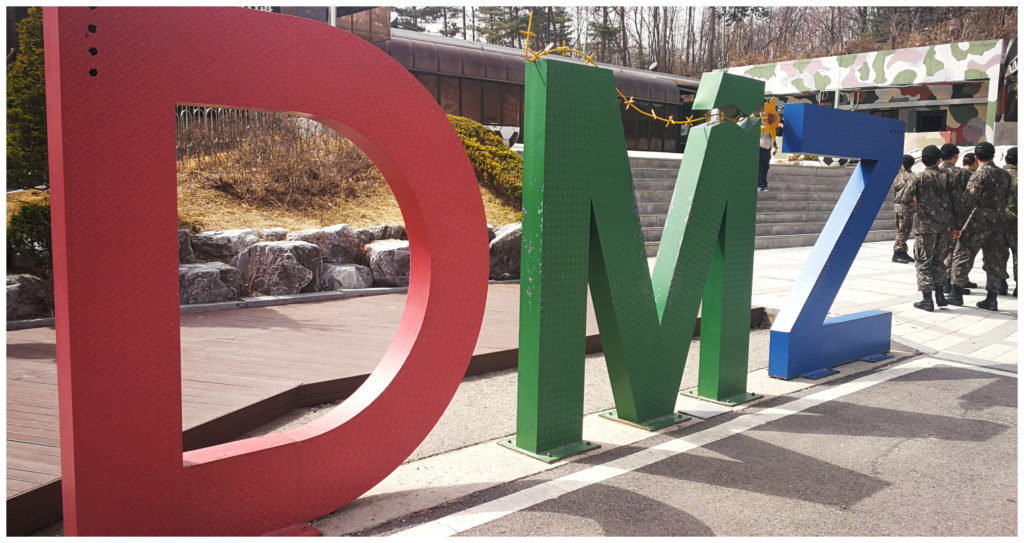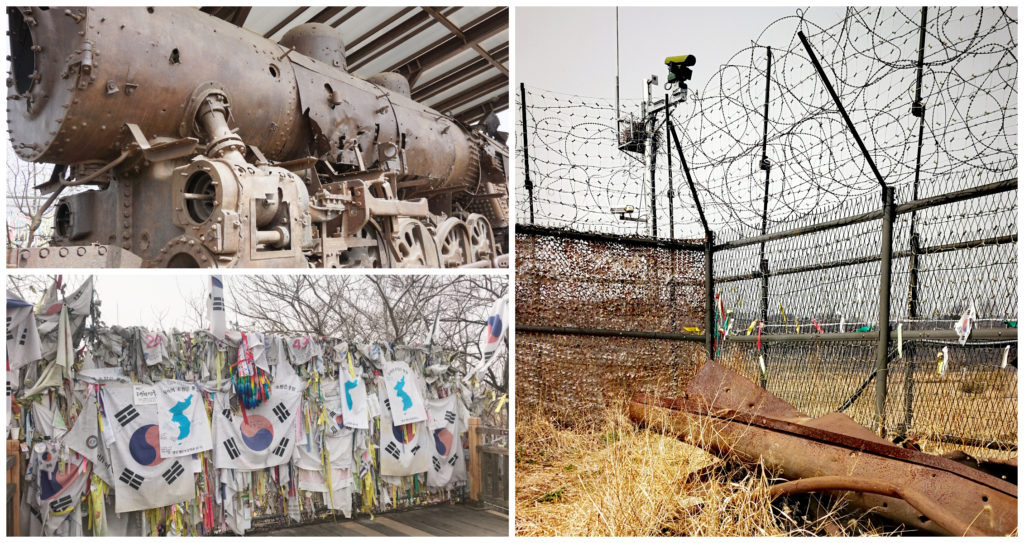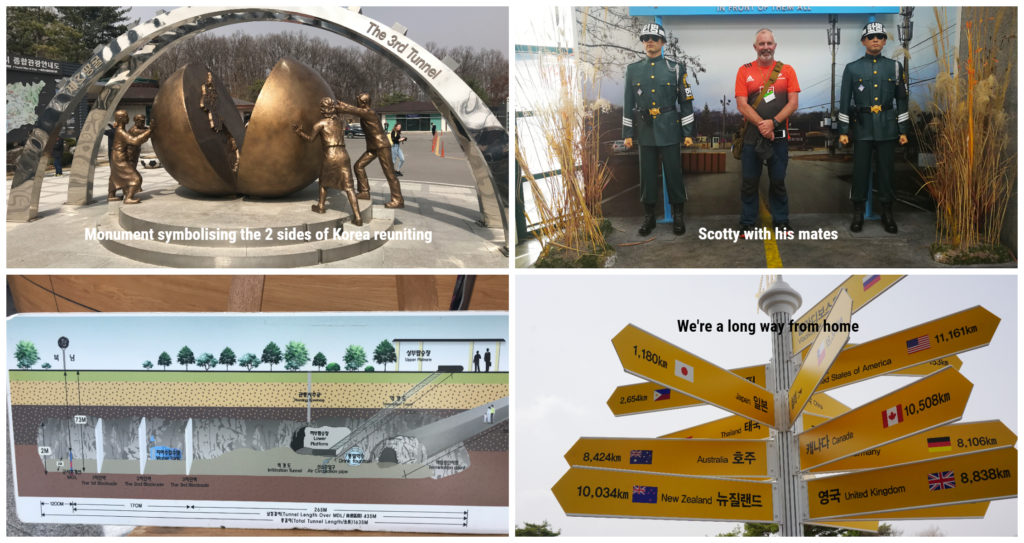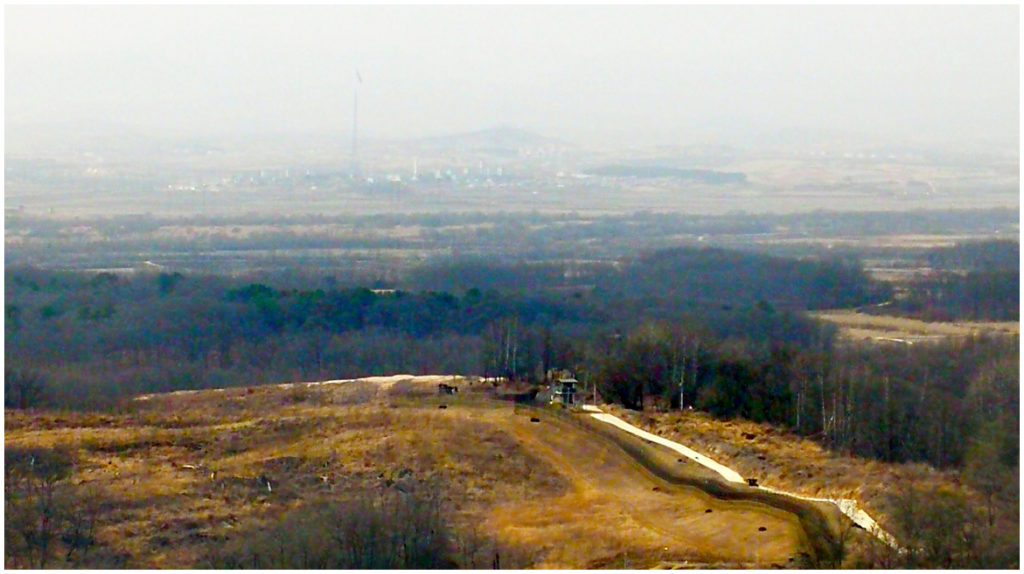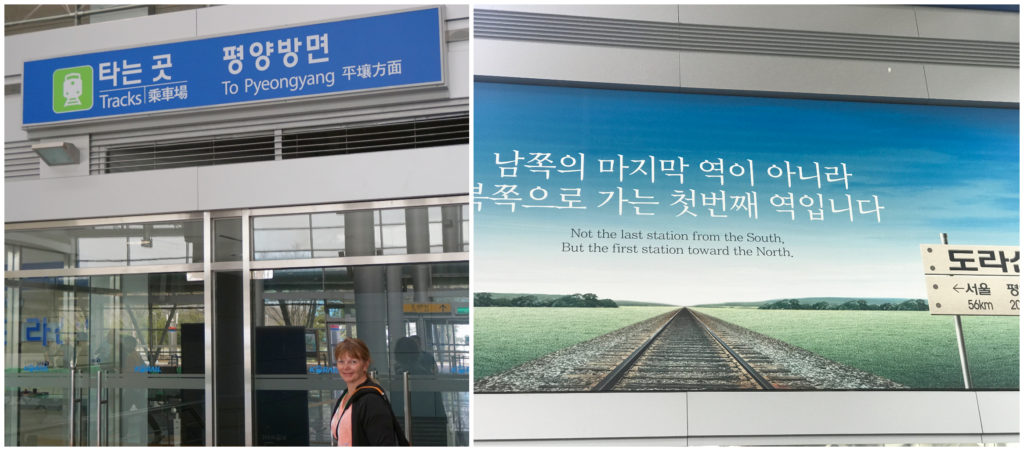DMZ (The Demilitarized Zone)
What is the DMZ
The Demilitarized Zone (DMZ) is a strip of heavily land-mined strip of land (4km wide x 250km long), that separates North Korea from South Korea. It roughly follows the 38th parallel and includes both sides of the cease-fire line as it existed at the end of the Korean War (1950-53)
It was created by agreement between North Korea, China and the United Nations in 1953.
Korean War
An armistice was signed on 27 July 1953 which formally ended the war in Korea. North and South Korea remain separate and occupy almost the same territory they had when the war began.
The armistice is however only a cease-fire between military forces, rather than an agreement between governments. No peace treaty was ever signed which means that the Korean War has not officially ended.
Guided DMZ Tour
When we knew that we were going to be visiting South Korea, we decided that a tour to the DMZ was going to be at the top of our list. We weren’t going to miss out on experiencing the most fortified border in the world.
The DMZ is a mear 56km from Seoul so it sits precariously close to the ‘hot zone’.
We made an online booking with Trazy Tours. A half day tour (11.30am to 5.30pm) cost us $90US/$128NZ each. Some of the places we visited included:
Imjingak Village
- Imjingak Village – this is the most northern village in Sth Korea that’s open to visit. After this point, you must be granted government permission to go any further north. This was our first stop where our guide took all of our passports to register us with the Korean Government. While they organised the paperwork we were able to wander around the settlement.
Bridge of Freedom
- Bridge of Freedom – This is where the replica of the Bridge of Freedom is located. It was relocated using all the original materials and it is the bridge where 13,000 POW were traded at the end of the Korean War. Because the DMZ is so heavily land-mined and all other bridges had been destroyed, this bridge was specifically built for this purpose. Prisoners were driven to the bridge and then walked across to return home. The bridge is now a place of remembrance for families who are still separated to this day. Sth Koreans tie coloured ribbons to the bridge and the ribbons are covered in messages. These are messages for their family members in the North, or in memory of family members who died in the North. It was a moving place to visit for sure.
The 3rd Infiltration Tunnel
- The 3rd Infiltration Tunnel – this tunnel is one of four tunnels discovered by South Korean forces in the DMZ. The tunnel was discovered in 1978 based on information by a North Korean defector. It spans over 1.6km in length, 2 metres high and 2 metres wide. With these dimensions, it is estimated that approximately 30,000 soldiers could move through the tunnel per hour. It is thought to be more threatening as an invasion tool than the 1st and 2nd tunnels as it’s only 4km away from Imjingak Village. There is possibly up to 20 or more other tunnels and South Korean forces are still actively searching. It was really interesting to be able to walk down into the tunnel which went deep underground, but unfortunately, photography was not allowed. We donned hard hats and given warnings about the low ceilings. It was a very steep walk down (and even harder coming back out). Of course, the tunnel has been sealed off by a thick concrete wall but there is a small gap that you can see through to the other side.
Dora Observatory
- Dora Observatory – After leaving the tunnel, our next stop was the Dora Observatory on top of Mount Dora on the South Korea side of the 38th parallel. This is the closest you can get to North Korea without crossing the DMZ. You could tell that we were close to the ‘hot zone as the razor wire fencing had increased to 4 layers thick. There are fixed binoculars you can pay to use but we had our own. It was so surreal to stand there peering across ‘no man’s land’ to North Korea. Listening to their propaganda music and speeches being played over large speakers – aimed directly at South Korea. Photography rules had been relaxed over the last couple of months and we were now free to take photos from the ‘other’ side of a painted yellow line. We were still instructed not to photograph military posts to the left or right of the observatory. We had a watchtower behind us with a couple of soldiers watching over us and the DMZ. I did get a fright when one of them waved out to me as I stood there staring across at him! At least I hope he was waving! Although it was a grey misty day, we could clearly see the huge flagpole flying the North Korean flag. There is a story about the flagpole competition between the two countries. They have been trying to outdo each other on who can erect the highest flagpole. This is why the North has such a ridiculously tall pole.
Dorasan Station
- Dorasan Station – if the two Korea’s ever reunited, Dorasan Station is the station that will connect them. It has clearly been built with this in mind with full provisions for customs, security scanning and processing. It is all just sitting there full of the infrastructure of a working station – just not the trains or the people. The station is located only 650 metres from the southern boundary of the DMZ. In 2007, freight trains began travelling into North Korea, taking materials to the Kaesong Industrial Region and would return with finished goods. It was a 16 km trip made once every weekday. However, in 2008 the North Korean government closed the border crossing. It has been opened and closed again repeatedly with the most recent being 2013. It seemed quite eerie that the destination sign inside the station reads ‘Pyongyang’ (the capital of North Korea). This is just either hopeful thinking or simply symbolic.
JSA (Joint Security Area)
We were wanting to book in on the full day tour as this included the JSA (Joint Security Area). This is the only portion of the DMZ where North and South Korean forces stand face-to-face. It is also often called the Truce Village. It was also the site of military negotiations between North Korea and United Nations.
Unfortunately and unbeknown to us, these tours get booked out very quickly. Due to tight restrictions in this area, there are limited spaces available. The next available space wasn’t for another month. We were also unaware that the entire area was going to be shut down for a month to accommodate the historic meeting of the North and South Leaders on 27 April 2018.
Even though we missed out on the JSA, we were so pleased to have had the opportunity to visit an area that we’ve read and heard so much about.
We were able to visit the DMZ while staying in Incheon for our house sit assignment. Click here to read what else we saw whilst staying close to Seoul.
Click on the link below to see a video of some of our tour highlights.
